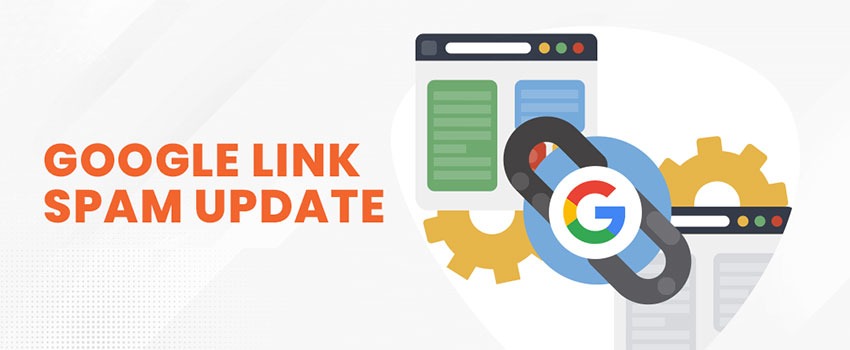How Fresh Content Impacts on Your Website Ranking
Quality fresh content is like good food for the search engines and despite the rapidly changing configuration and structure of search engines, fresh content that ranks top is still very important. The more fresh content your website receive, the more the search engines will love to visit and that also comes with ranking gains. But how often should you add fresh content to your website to benefit from this ranking gain? That is a question we will address in this post.
Also read:
How to recover from a Search Engine ranking drop
SEO Myths That Can Kill Your Ranking Gains
Plenty of research by some very knowledgeable people has already been done on the effects of blogging frequency on SEO results, and we’ll share those key findings with you in this article. But that won’t be without a warning and that warning is that you will never substitute someone else’s experience for your own. No research in the world is ever going to take the place of personal knowledge, gained by first-hand experimentation and tracked results, of what will work best in your own particular situation.
Also read:
5 SEO Winning Tips You Should Take Seriously
10 Unwholesome Practices That Hurt Your Website Ranking
Ideally your blog is addressing a particular topic, and is written for a specific niche or industry. By doing your own research and compiling your own statistics of what’s working and not working for your blog, you may well find instances where a bad idea according to the research of others is actually working very well for you. Or that what should be a good blogging practice just doesn’t seem to apply in your case. These are things that you’ll never know unless you do your own observation and experimentation.
Later in this article we’ll look at some ideas for conducting your own research to help you optimize your blogging efforts for maximum results. For now, let’s see what others have found to be working for their blogs.
Also read: User Experience: An Important SEO Factor
1. What’s the Lifespan of a Blog Post?
The sensible way to start a discussion of how often you should be blogging is to understand how long the average blog post is going to stay fresh and relevant, which means how long it will continue to attract readers and be shared across other blogs and various social channels.
On average, blog posts have a lifespan of 2 to 3 years. In some cases, it could be even longer. Compare this with an average life of 3 hours for a Facebook post, and 2 hours for the average Twitter tweet. The lesson here is simple: if you only have a limited amount of free time to work with, spend it on something that will do you the most good for the longest time. This means blogging.
Also read: 10 Tips to Guide Your Website Security Policy
Many of the longest-lived blog posts are written about evergreen topics. Evergreen simply refers to content that never goes out of style or becomes outdated. As long as your content remains relevant to the search term, Google may continue to rank your post indefinitely.
Even non-evergreen content can get a new lease on life by recycling your post with updated information and the latest developments.
Why Fresh Content Is Important
Fresh Content = Frequent Indexing
Don’t confuse this phrase with the thinking that fresh content will always give you higher indexing. That may not be the case. However, the more frequently you update your website with articles, downloads, and new web pages, the more frequently a search engine will stop by to visit your website. When search engines look at your site more frequently, you have the opportunity to achieve higher rankings based on the content you provide. Quality is key.
Search engines use web crawlers (a.k.a robots, bots, like Googlebot), which are simply high-tech programs that scan the internet for websites. The web crawler indexes a site based upon a number of algorithmic factors determined by the search engine company.
For instance, a site may be indexed based upon a combination of the number of incoming links to the site, the number and type of subject keywords used, and how often a site is updated. Every time you make an update to your website, the search engine takes notice and re-arranges your site’s ranking. Thus, if you want to increase the chances of your website getting a higher ranking, update the content frequently so that a search engine will reassess your position on its index.
Keep in mind, more content is not the key here, quality is. So,, it is a good idea to update frequently, but keep your content standards high. If you blast your page with a ton of low quality articles stuffed with keywords, you are going to be penalized.
Also read: A Simple Guide to Remarketing a Poor Performing Website
Google Loves Frequently Updated Websites
By far, the most frequently used search engine is Google. As the king of all search engines, Google has tremendous influence on webmasters and how websites are constructed. When Google expresses its love for websites that update frequently, this is a sure sign that you should add fresh content to your website as often as you can.
Of course, you should not make unnecessary changes, additions, or postings every hour of every day. However, a site that is updated once a day, or at least two to three times a week, is considered a frequently updated site. The Googlebot that crawls the web is constantly searching for web pages that are new or updated and then adds the fresh content to the Google index. If you update your content often with reliable and valuable information, then you have a better chance of Google ranking your site higher with each update.
So, add an article, an image or just make some change on your site to get noticed. The easiest and most effective way to stay fresh is to add a blog on your site and continue to add articles that will get noticed by your viewers. If they comment on those articles, that counts as an update on your site. So, write something that will get the attention to begin helping with your frequent updates.
Also read: 6 Common Mistakes That Hurt Website Ranking
More Content Means More Keywords
When you publish new content, you present yet more opportunities for your site to contain more keywords. Keywords are high on the algorithm chart for search engine indexing and ranking. Frequently added content, such as blog or article postings, allows you to optimize the article with pertinent keywords that can attract visitors to your site.
For instance, if you run an insurance quote website and update four to five times a week with new articles, you can focus each article on a different aspect of insurance, such as automobile liability insurance or universal life insurance. Each time you add a new article, you incorporate valuable keywords that help a search engine recognize your website as a place searchers can visit for their specific insurance needs.
Now, you have to remember that with the algorithm updates, Google does not base a ton of weight on how many keywords your website has. Google is looking at top quality content, rather than keyword-stuffed crap content when it indexes a site.
Yes, keywords are still a part of your SEO strategy, but you cannot build your entire SEO campaign around a keyword or keyword phrase no longer. Instead, create quality content that yes, has your keywords within it, but only if they are naturally in place. In other words, write content that answers a questions, explains how to do something for the reader or provides quality information that they want. Do not write content around a keyword; write it around what the reader wants. Use your Meta tags, title tags and descriptions for your keywords, but leave the content in a more natural state.
Fresh Content Increases Your Website Authority
All webmasters strive to become the industry authority in Google’s eyes. The predominant strategy to becoming an authority site is by abiding by the SEO adage, content is king. The more informative, valuable content you can publish that pertains to your industry, the greater authority potential your website enjoys.
In addition, if you review your competitors websites, you will quickly find that the authority sites in your industry have tens of thousands of pages indexed by Google, who also measures relevance by site saturation. The more valuable content you publish, the better your chances of becoming an authority site.
Furthering this endeavor, frequently publishing industry news updates is another solid strategy in becoming an authority site. Each time you update your website with a news story, another page is created and indexed by Google.
Also read: SEO Myths That Can Kill Your Ranking Gains
The more you write on a particular topic, as long as the content is great, you become a stronger authority and people begin to trust what you say. The more they trust you, the more likely they are to purchase from you. Social media platforms are a great place to begin building authority on a topic. Answering questions on forums, posting valuable in-depth articles on your blog or just commenting something worthwhile on other’s blogs can build your reputation and gain you the authority you need in your industry.
If you consistently write top quality content, users will become loyal. Loyalty is something you cannot buy, so even the small business owners have a chance to compete with the big dogs of their industry.
Fresh Content Keeps Your Audience Informed and Updated
Another good reason to update your website with valuable content is to keep current subscribers updated, as well as provide necessary information for new visitors to convert to customers. You could utilize a RSS feed that will update subscribers each time you publish fresh content to the website. By keeping your audience engaged, you develop long-term loyalty, which translates into returning traffic that adds tremendous value to your website.
Likewise, your continually fresh content can provide new visitors with valuable information about your small business and your products or services. If a visitor was led to your site through a search engine link, then you need to convince them that your product is the best choice for them compared to the thousands (or millions!) of other results presented in their search.
Give them articles about customer satisfaction. Inform them on the benefits of your product. Help them understand why they need your product. The more information a potential customer can access, the more likely he or she will be able to make an informed decision to purchase.
Also read: 5 Steps to Review and Improve Your SEO
Regularly updating your website with fresh content will not only garner appreciation and loyalty from your visitors, but will put you in good standings with the powerful Google.
If a visitor finds your site and begins reading through your content and finds it is outdated, do you think they will stay or go? What would you do? I certainly would not order anything from someone who had an article from 2011 on their main page. I want to know the business is active, alive, worthy.
2. In Blogging, Consistency is as Important as Frequency
Number one on the agenda for your blog should be your commitment to make regular posts on a consistent basis no matter what it takes. This is critical because many of your regular blog readers will be looking for new posts from you, and when they don’t find them, will assume that your blog is not that important to you and will quickly lose interest.
Posting consistency also applies to the specific days of the week when you publish new content. If you start out posting every Monday and Thursday, you need to continue to post every Monday and Thursday. Yes, it really is that important.
The best way to organize and simplify your blog posting is with an editorial calendar. You can start out small, if you wish, by creating a list of blog topics for the next 30 days. Be sure to include seasonal topics if appropriate to your blog. One great source of relevant blog topics is your current customers; take note of the most common questions you are getting about your product or industry and write a post around them.
If you’re concerned about being able to keep to your publishing schedule, find someone in your organization that can. Or look into outsourcing your blog posts to a reliable writer. Once you find someone to handle the actual writing of your blog posts, be sure to briefly review all content before releasing it for publication.
Also read: Best Free SEO Tools to Power Your Business
3. How Often You Should Blog
Many bloggers have found the magic number for blogging frequency to be twice a week. In short, more blogging means more traffic, and no matter what your initial conversion goals are, more traffic means more potential customers.
Many marketers have reported a 45 percent increase in traffic when the total number of blog posts on their website increased from 11-20 to 21-50.
Lead generation also benefits from regular blogging activity. When the frequency of blog posts was increased from once to twice per week, the number of incoming leads almost doubled.
The next big jump comes from blogging on a daily basis, which will basically double your traffic. The downside of daily blogging is that each post will remain at the top of your blog only for that day; blogging twice a week means each post will get twice the attention from being in that first position.
The other problem with daily blogging is the burnout factor; the pressure to consistently produce at that rate usually results in a decline in the overall quality of your posts, which is the last thing you want to do.
On average, blogging is one of the most cost-effective channels for generating leads, followed by social media, organic SEO, direct mail, telemarketing, paid search, and trade shows.
4. Don’t Forget to take Advantage of the Social Networks
Once your post is published, take the extra step and promote it across your social media channels. You’ll see higher website traffic as well as improved search engine rankings. Some of the most effective ways to promote your blog posts include:
Creating great content on a consistent basis. Informative, relevant, and sometimes even provocative content is what your readers will want to share. Give them what they want and they’ll give you what you want.
Making sure that your social sharing buttons are visible. While many sharing buttons are located towards the top of the blog, placing them at the end of the blog is another option that works just as well.
Don’t just hope that readers will share your content politely ask them to share it. Since nobody likes to be the first, get the ball rolling and share the content yourself.
5, How to Conduct Research for Your Blog
One of the biggest problems with published research about blogging is its inability to take the unique characteristics of your target market into account. Your audience may or may not respond in the same way that the averaged results from the research have indicated that they should.
Start with the basic demographics of your target audience. Consider how likely they are to respond to your blog. In some cases, it might make more sense to target some demographic groups through another channel, such as members of Generation Y. Born in the 1980s and 1990s, this group grew up with digital technology, and are much more accessible through Facebook and Twitter.
Track your website traffic. You’re looking for trends that indicate the days of the week and times of day your blogs are getting the most traffic, engagement, and social sharing.
Some great analytic tools, either free or with a free trial period, that can help you analyze your traffic include Google Analytics, AWStats, CrazyEgg, SiteMeter, GoStats, and StatCounter.
Summary
Content is what search engines love. But just having fresh content is not enough, they also have to be quality content. Content that addresses the needs of visitors and sole problems are loved by visitors and considered quality content. Search engines are also interested in websites that are updated regularly. For instance, if you update every Monday and Thursday, they stick to that because the spiders will likely come by every Monday and Thursday once it is found that the is food on those days.
Finally, remember that the search engines hate spammy content. Keeping your fresh content quality very high and you will be rewarded with high ranking.











